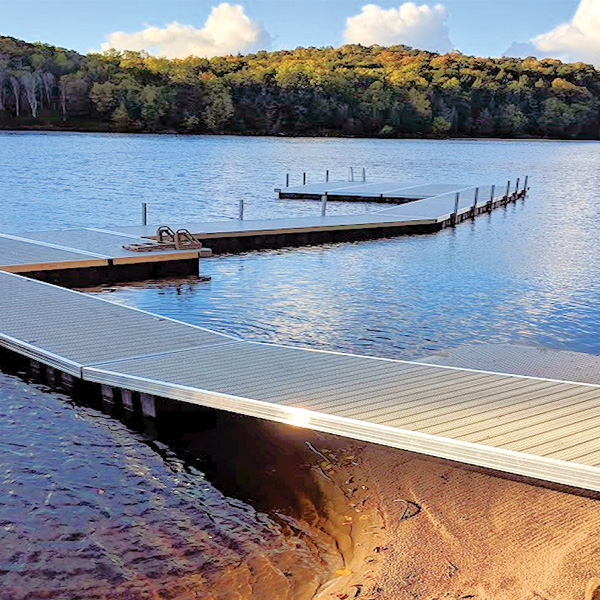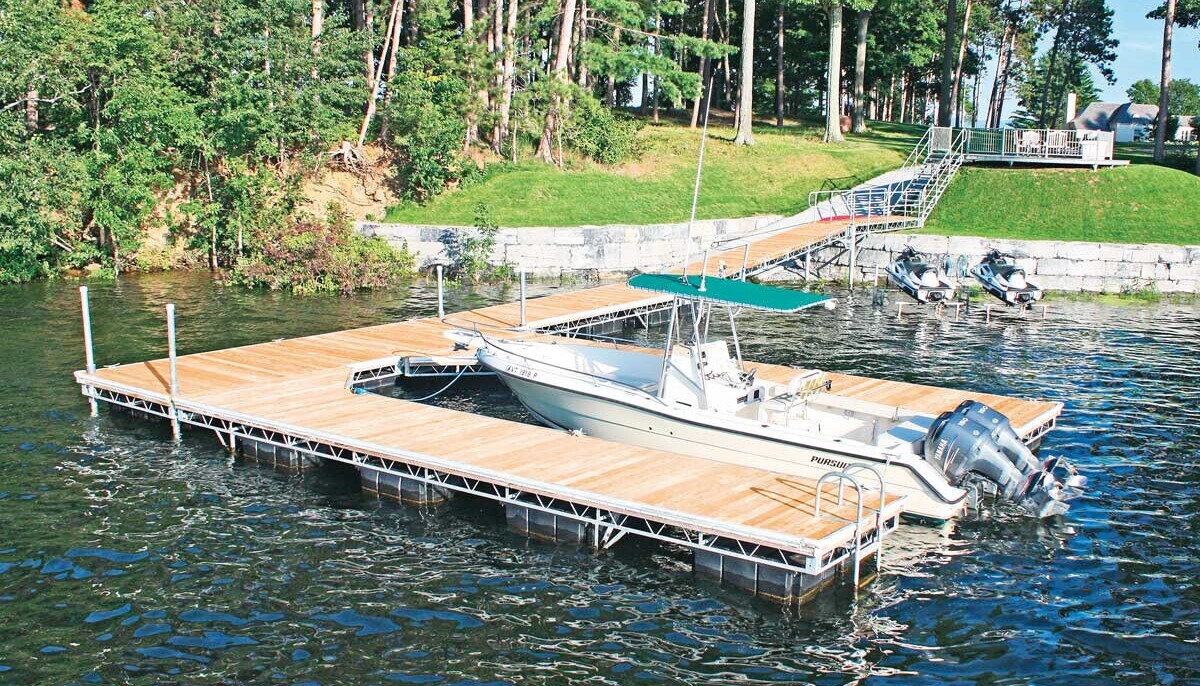Floating Docks: The Smart Selection for Modern Waterside Living and Leisure
Floating Docks: The Smart Selection for Modern Waterside Living and Leisure
Blog Article
Upgrade Your Waterfront With Sturdy Floating Docks
Upgrading your waterfront with sturdy floating docks can dramatically improve both performance and aesthetic appeals, offering a versatile option for different water activities. These frameworks are developed to adjust to rising and falling water levels, making certain security and accessibility throughout the periods. With a variety of products offered, including low-maintenance choices and conventional timber, picking the best dock can enhance your personal style and satisfy useful needs. Nonetheless, comprehending the nuances of installation and upkeep is vital for guaranteeing longevity and efficiency. When making this financial investment?, what factors should you think about.
Benefits of Floating Docks
Floating docks deal a wide variety of advantages that boost their charm for various maritime applications. Unlike conventional set docks, floating docks increase and loss with the tide, guaranteeing consistent access for boats and watercraft no matter of environmental problems.
Furthermore, floating docks are easier to transfer and set up, providing adaptability for temporary or seasonal use. Their modular design enables customization to fit details needs, whether for exclusive marinas, domestic beachfronts, or industrial applications.
In addition, floating docks produce marginal disturbance to the marine environment, protecting neighborhood communities and minimizing the likelihood of erosion. They also supply boosted safety and stability for individuals, as their resilient nature offers a more forgiving surface area than inflexible structures.
Additionally, floating docks can promote a diverse series of activities, such as angling, swimming, and entertainment boating, making them a valuable asset for waterside advancement. Their convenience and practicality make floating docks a preferred option for a range of marine projects.
Choosing the Right Materials
Choosing suitable materials for floating docks is important to their durability, performance, and general efficiency. When selecting materials, think about elements such as environmental exposure, maintenance requirements, and structural integrity. Usual products consist of timber, plastic, light weight aluminum, and composite choices, each offering unique advantages and drawbacks.
Wood, while aesthetically pleasing, calls for normal upkeep to stop rot and degeneration. Pressure-treated wood can enhance resilience, but it may still catch water damage with time. Plastic drifts, often made from high-density polyethylene, are resistant to deterioration and call for very little upkeep, making them an appealing selection for low-maintenance applications.
Light weight aluminum is one more practical choice, understood for its strength and lightweight residential or commercial properties. It is resistant to corrosion and can withstand extreme climate problems, although it may be more pricey than various other products. Compound materials integrate the best qualities of timber and plastic, supplying a durable and low-maintenance option that resembles the appearance of wood without the linked drawbacks.
Inevitably, the option of material must straighten with the planned use, ecological considerations, and spending plan restrictions, ensuring a long lasting and functional floating dock that satisfies your particular needs.
Installment Process Summary
The effective setup of a floating dock relies on careful planning and execution, making certain that it operates properly in its designated environment. The initial step involves analyzing website problems, including water deepness, shoreline functions, and prevailing climate patterns, which will notify the dock style and anchoring system.
Adhering to the site assessment, the following phase is to prepare the floating dock components. This consists of constructing the structure, protecting drifts, and attaching any essential hardware. It is vital to make sure that all links are water-resistant and durable to endure aquatic conditions.
When the dock is set up, the installation process commences with positioning the dock in the water. This can involve a crane or various other training equipment, specifically for bigger structures. Proper positioning is essential for capability and safety.

Maintenance Tips for Long Life
Normal upkeep is necessary for ensuring the longevity and optimum efficiency of a floating dock. To achieve this, begin with regular inspections at the very least twice a year, concentrating on the honesty of the dock's structure, including the flotation devices and attaching equipment. Look for indications of damages, rust, or wear, and resolve any issues promptly to prevent more wear and tear.
Cleaning up is one more critical element of upkeep. Get rid of debris, algae, and barnacles from the dock's surface to stop slippery conditions and preserve visual allure. Use a soft brush and a light detergent to avoid damaging the dock's products.
In addition, ensure that the dock is correctly secured and safeguarded to hold up against seasonal changes in water levels and weather. Inspect the anchoring system for security and make changes as essential.
Enhancing Your Outdoor Visual
To produce an aesthetically enticing exterior room, integrating a floating dock can substantially improve the general visual of your waterside pop over to this site property. Floating docks are not just useful yet can additionally offer as a striking centerpiece that enhances the natural environments - floating dock builder. Offered in various products and designs, these docks can be personalized to match your residential property's architectural style and landscape
The addition of ornamental aspects, such as incorporated lights or elegant barriers, further raises the dock's visual charm. Think about utilizing natural timber coatings, which blend seamlessly with the setting, or choosing contemporary materials like light weight aluminum or composite decking that use a sleek, contemporary appearance.
Tactically positioning planters like it or seating areas on or around the dock can create welcoming areas that encourage relaxation and satisfaction of beachfront views. Furthermore, including shades and textures that harmonize with your landscape will create a cohesive visual throughout your outside location.

Conclusion

Upgrading your beachfront with durable floating docks can significantly boost both capability and looks, providing a flexible remedy for different water activities. Unlike typical set docks, floating docks surge and autumn with the trend, guaranteeing consistent ease of access for boats and watercraft no matter of ecological conditions.Choosing ideal products for floating docks is important to their durability, efficiency, and general effectiveness.When the dock is set up, the installment process starts with positioning the Related Site dock in the water.In summary, floating docks deal countless advantages, including adaptability to water degree changes and a range of product alternatives.
Report this page